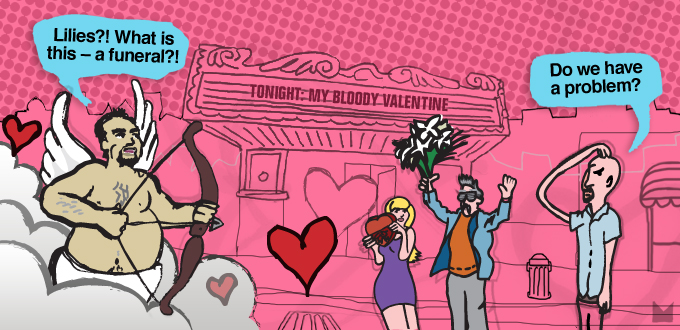Confectioners and florists delight, singletons despair; February 14th is almost upon us. The second-most celebrated holiday in the world (beaten by New Year’s Eve if you’re asking), Valentine’s Day encapsulates many things – and not always romance.
First there’s that teenage anxiety of being forgotten. Then there’s the fledgling relationship fear of getting it completely wrong. And then the yearly experience of being ripped off by ‘all-inclusive Valentine’s feasts’. A couple of hearts on the menu shouldn’t add a tenner to the bill. That’s just my opinion. And the same goes for that bastard with the harp.
When it comes to commercials, Valentine’s Day is surprisingly small beer for UK advertisers. Perhaps it comes to soon after the January drive? Whatever the reason, it’s often a time solely reserved for flogging jewelry, perfume and cards. And they really run with it.
However, elsewhere in the world it’s still an important window in the wider media buying schedule. And, as I recently rediscovered, there’s a strict etiquette to dating and commercials relating to the Birthday of Cupid – or however the day started.
The first thing you’ve got to consider is your props. Take flowers for example. If your prop master hasn’t read the PPM notes (that’ll be the day) or the director hasn’t asked the client the right questions, you could be visualising a funeral without even thinking about it.
You think I’m exaggerating? I wish I was. My latest commercial for Alpen has a charming opening sequence in which the young heroine receives a bouquet of flowers from her eager suitor. But what flowers? I suggested twelve red roses. Timeless. Classic.
Yeah, classic for a fallen soldier maybe. In Russia, red flowers symbolise war and bloodshed. What’s more, giving flowers in even numbers is extremely bad luck. And I don’t know what you’re doing with those yellow carnations – they’re no replacement! Yellow blooms symbolise parting and deceit. Why do these deeds even need their own flowers?!
Look, I’m no stranger to cultural diversity. Hell, I’m Italian. I know that you never remove your jacket at a marriage banquet before the father of the bride – especially if he happens to be sitting at a table in my homeland of Sicily. Doing so would result in a silence that would make you long for the omerta. But there are just too many complicated Valentine’s Day rituals to be observed for your average commercials director.
For example, in Japan, Valentine’s Day is a double-headed affair. The woman bestows a gift to their boyfriend ‘or any man close to them’ on February 14th. A month later, the man reciprocates on White Day. What most interests me here is the phrase: ‘any man close to them’. I’d love to see that line in a director’s interpretation for any project other than a ‘free and easy’ dating service. And just an aside: be careful wishing people a Happy White Day in public places. Culture can be lost in translation.
Knowledge like this is gold in our global industry. You need to be up on your local traditions. So here’s a quick Valentine’s Day run down. In Latvia and Lithuania it’s traditional to put stickers on your lover’s face and clothes. Don’t ask. In Wales they give spoons. Danish guys are expected to write a witty poem signed with dots. While Mexican men should join forces with a couple of mates and serenade their beau from under her window. Imagine that in England? ‘Err, Mick, Kev, I need a hand….’
Closer to home, in Norfolk, they have a dubious character called Jack Valentine who mysteriously leaves presents for kids on doorsteps. Someone should probably do a background check on him.
While the way we celebrate Valentine’s Day varies immensely, the way the industry portrays it remains maddeningly one-paced. There’s too much of this – cloying and sickly fare.
I think companies should use this unique holiday to go at things from a different angle. It’s a chance to cut loose and get people to love your brand for the fun of it. I’m talking about ads like this one. That said; this neat Google advert is a sentimental gem.
So what’s trickier, depicting Valentine’s day or getting it right with the spouse? I guess it depends where you’re filming. To all those celebrating with a loved one this year, enjoy. And if you’re alone in this world, make sure you circle April 14th in your calendar. That’s Black Day in South Korean culture – a day for singletons to eat black noodles and mourn their love life. Noodles and heartache – tasty!



